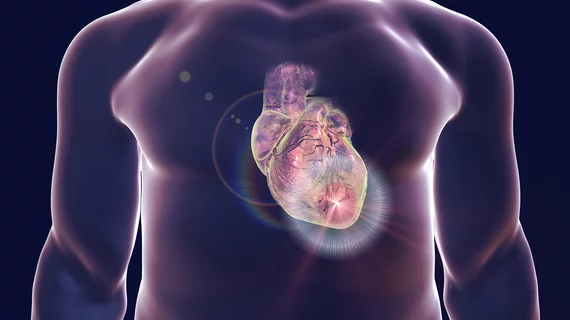Stress test helps ID diabetic patients at an increased risk of heart attack
PET myocardial perfusion imaging (MPI) can help providers identify diabetic patients at an increased risk of heart attack or coronary artery disease, according to new research published in Radiology: Cardiothoracic Imaging.
Lead author Hicham Skali, MD, MSc, from Brigham and Women’s Hospital and Harvard Medical School in Boston, and colleagues explored data from more than 7,000 patients, including nearly 2,000 with diabetes. The team found that abnormal results on the nuclear stress test are associated with an increased risk of cardiac-related mortality, a risk that is even greater for patients who have diabetes. The findings helped Skali et al. assess each patient’s cardiac risk with improved accuracy. According to the authors, these findings will help providers separate the patients at an immediate risk with those who can continue without undergoing any sort of procedure.
“The data from the stress test among diabetic patients actually allowed us to better risk-stratify people in greater than 39% of the cases,” Skali said in a prepared statement. “Patients with diabetes remain at a significantly higher risk of cardiac death compared to patients without diabetes, and the data from a stress test helps us further stratify those at greatest risk.”
Another key finding from the PET MPI study relates to what abnormal results mean for men and women. While prior research has found that men are at a greater risk of cardiac death than women, this study suggests that is not the case for diabetic patients.
“In patients without diabetes, being a woman confers a certain advantage in that their risk of death is much lower, regardless of their stress findings,” Skali said in the same statement. “However, when you look at patients with diabetes, men and women have relatively the same risk of cardiovascular death, and that risk increases with worsening findings on the PET stress test.”

